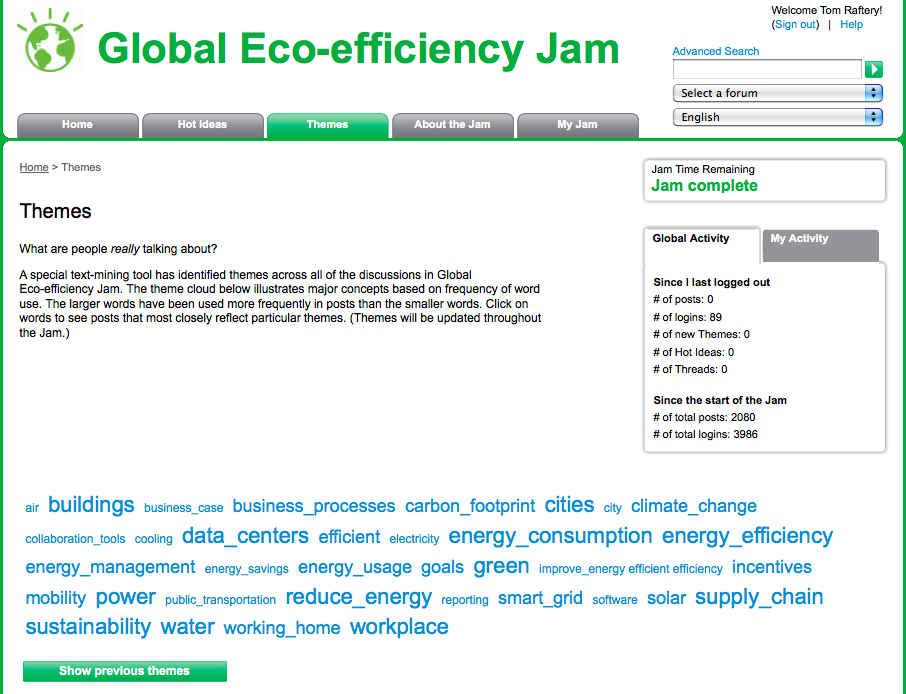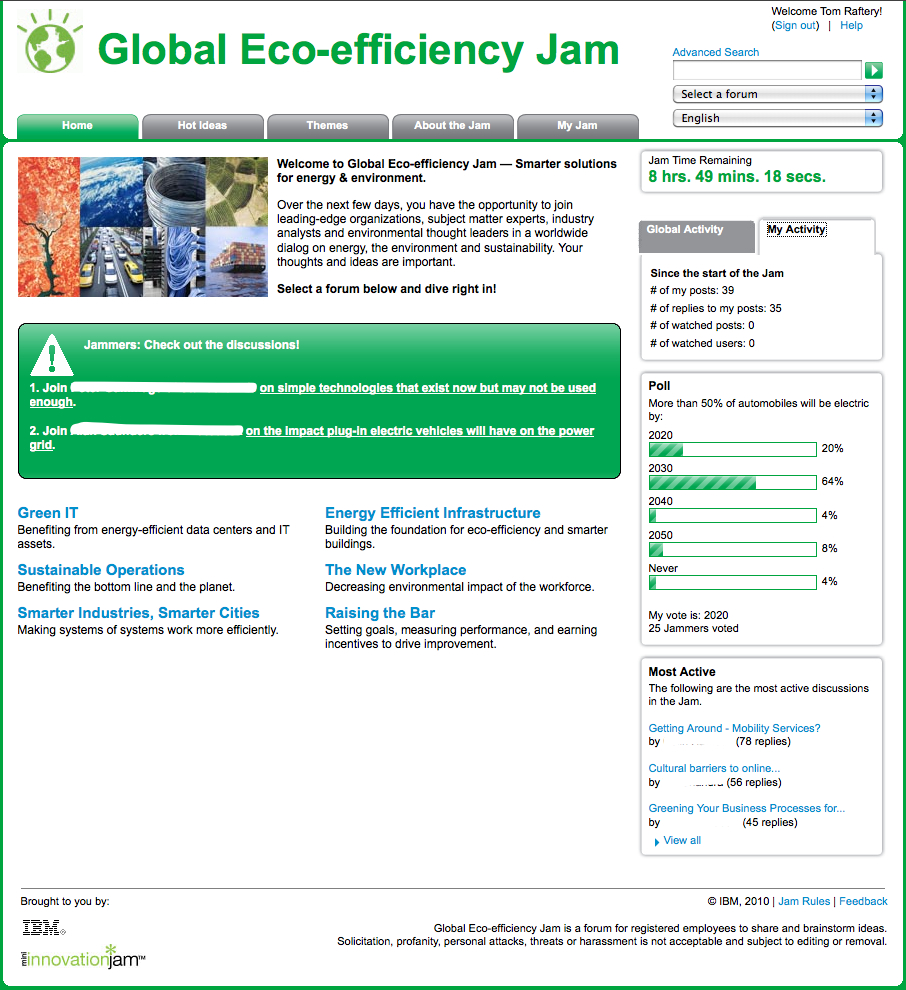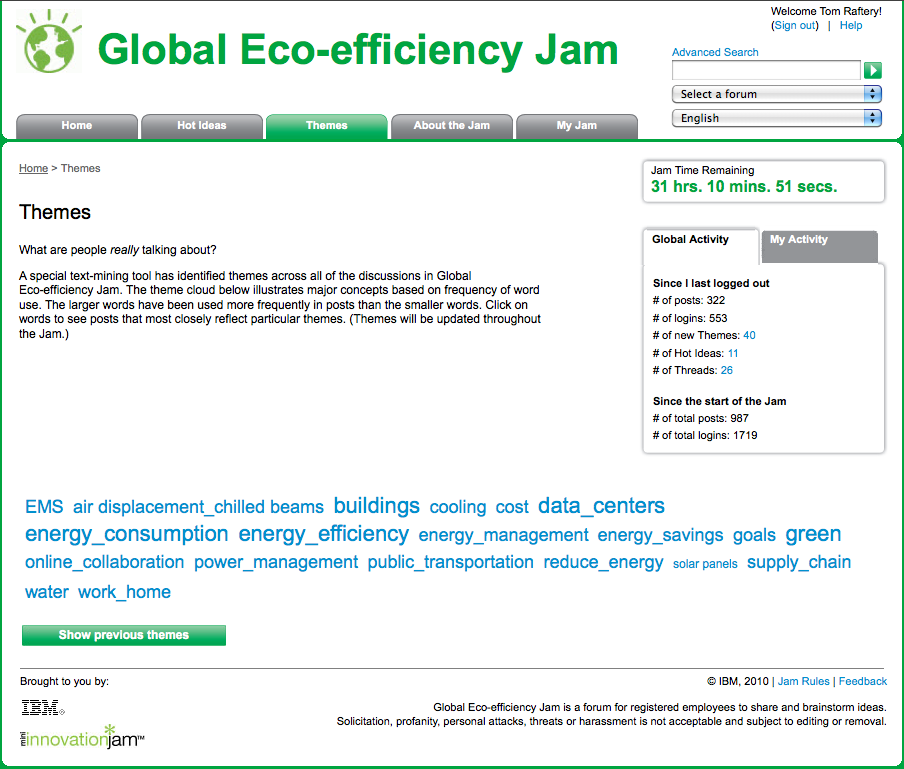I attended IBM’s service management conference IBM Pulse last week and I came away very impressed with how IBM’s suite of Smarter solutions is nailing sustainability (even if that’s not how they see it!).
The main areas I was interested in were the Smarter Cities, Smarter Buildings, and Smarter Transportation. I also wanted to check out their data center infrastructure management (DCIM), but there’s only so much I could fit into the two days!
The Smarter Cities solutions coming out of IBM are compelling, to say the least (though undoubtedly, given the politics in public administration, a tough sale!). One of the better talks at the event was by Boston CIO, Bill Oates. Bill talked about, amongst other things, how Boston had rolled out a smartphone app for citizens to report when they saw a problem in the city (litter, pothole, graffiti, etc.).
When a report comes in from a smartphone, it is immediately placed in a word order, and a city employee is tasked with resolving it. The inclusion of photos and GPS coordinates in the report obviously help enormously in speeding up its resolution. When the issue is resolved, the person who reported is notified, and is told which city employee fixed it! This is a fantastic way of personalising the city government back to the people – social at its best. Boston are now adding some gamification features to the app as well to make it even more compelling.
When Bostonians were asked why they liked the app so much their response was that previously to report a problem, they had to ring the city hall, and that felt like they were complaining, whereas with the app they feel like they are part of the solution.
"When we call the city we feel like we're complaining, when we use the app we feel like we're helping" smarter cities app #IBMPulse
— Tom Raftery (@TomRaftery) March 5, 2013
On the Smarter Buildings and Smarter Facilities front, it was great to see Tririga getting a lot of love at the event. We first wrote about Tririga here on GreenMonk back in 2009, and subsequently we wrote an email to several senior IBM execs introducing them to Tririga. It was nice to see them being acquired by IBM after that! Tririga is a suite of products designed to optimise use of a facilities portfolio. That can be done in any manner of diverse ways from identifying inefficient building stock in a portfolio of buildings, to simply spotting an open window in a building, and raising an alert.
Somewhat confusingly, as well as Tririga, IBM also has a Smarter Building Solutions group. This group works more on the buildings’ maintenance side of the house. This is vital for ensuring that buildings are running optimally at all times and minimising waste through downtime, or equipment failure.
In a similar vein, the IBM Smarter Transportation offerings from IBM make big use of what they call their Predictive Asset Optimisation (i.e. predictive maintenance). This is when the software analyses the (big) data coming from thousands (or even hundreds of thousands) of sensors looking for anomalies. These exceptions, once identified can often be caused by a part going out of tolerance and needing a repair, or replacement. Obviously, finding this out ahead of time allows for replacement parts to be ordered in advance, and maintenance to be scheduled when it suits, as opposed to reacting when the equipment fails. There’s obviously a big safety story here too. Avoiding catastrophic failures in transportation is in everyone’s interest.
IBM isn’t branding these solutions as being sustainable, per se, but from what I’ve seen at Pulse, there’s no doubt in my mind that Smarter ≡ Sustainable.
Full disclosure – IBM paid travel and accommodation for me to attend this event.






